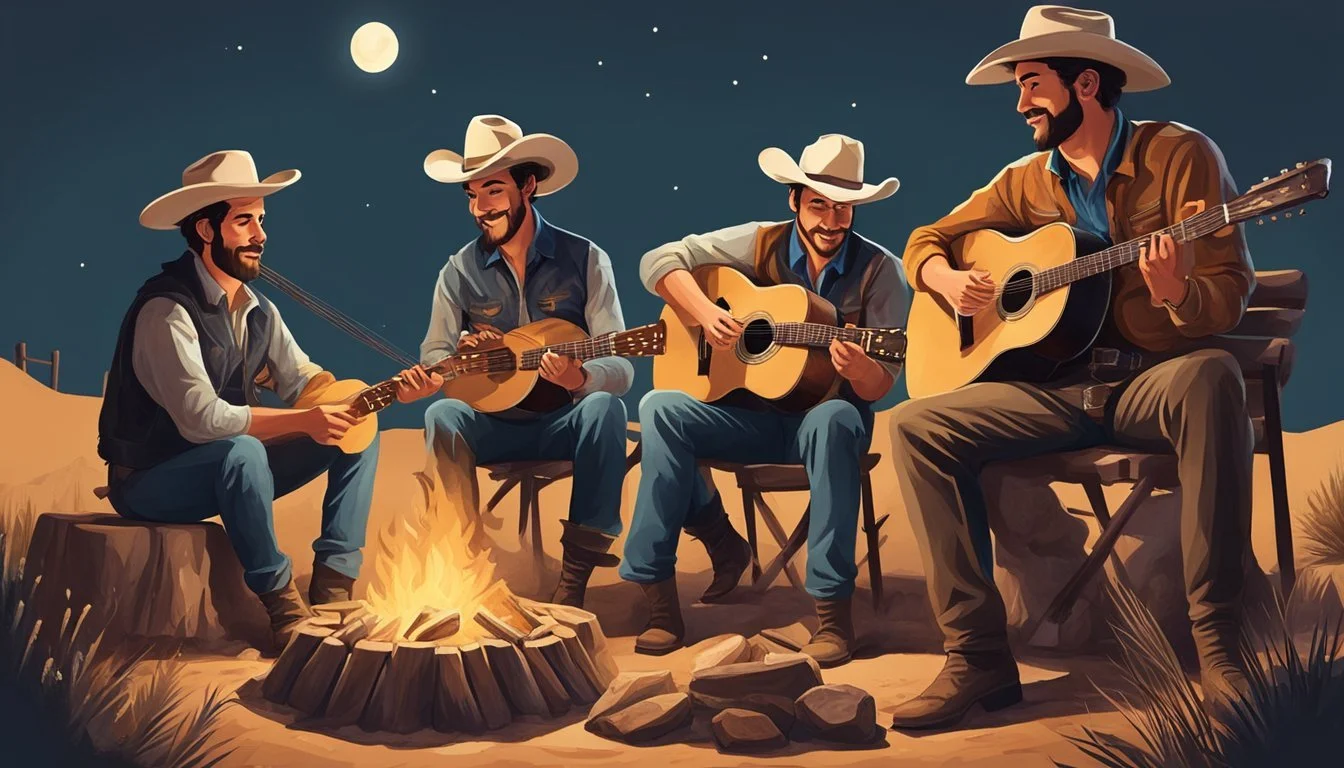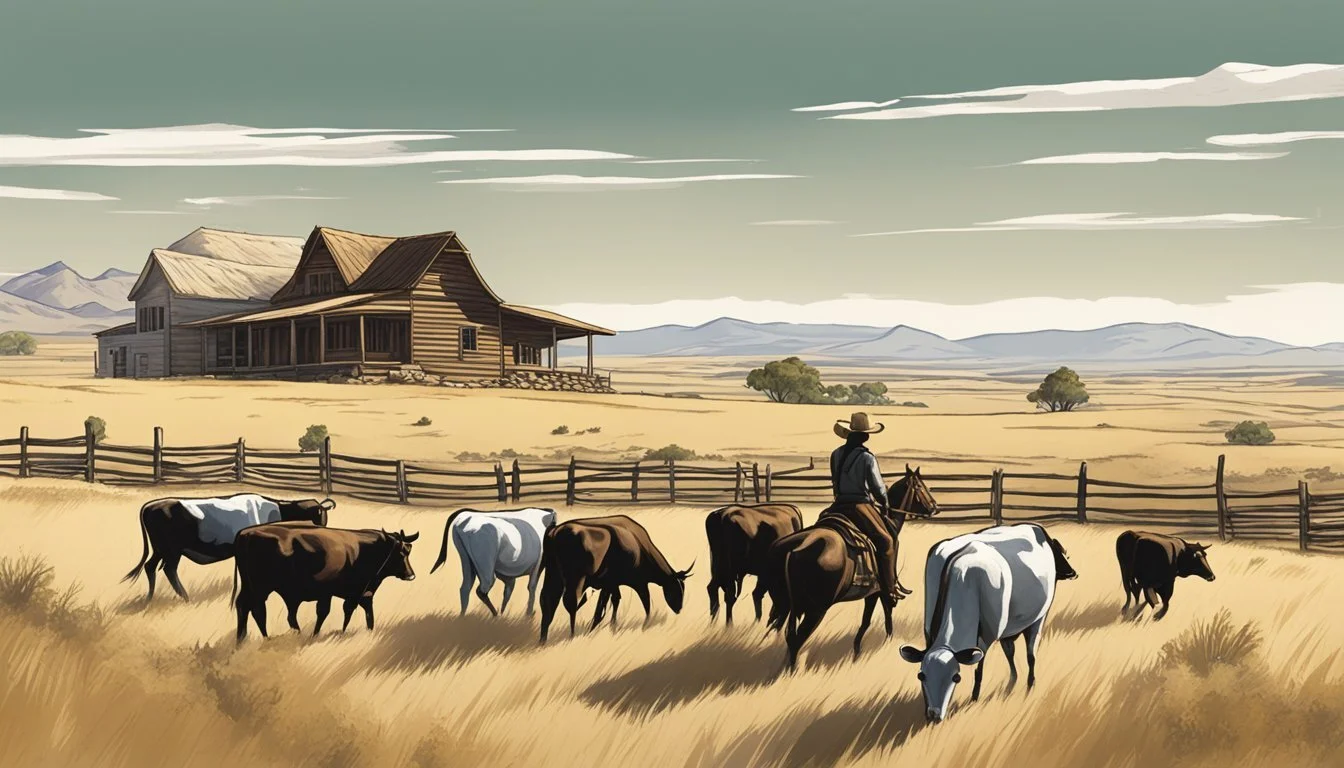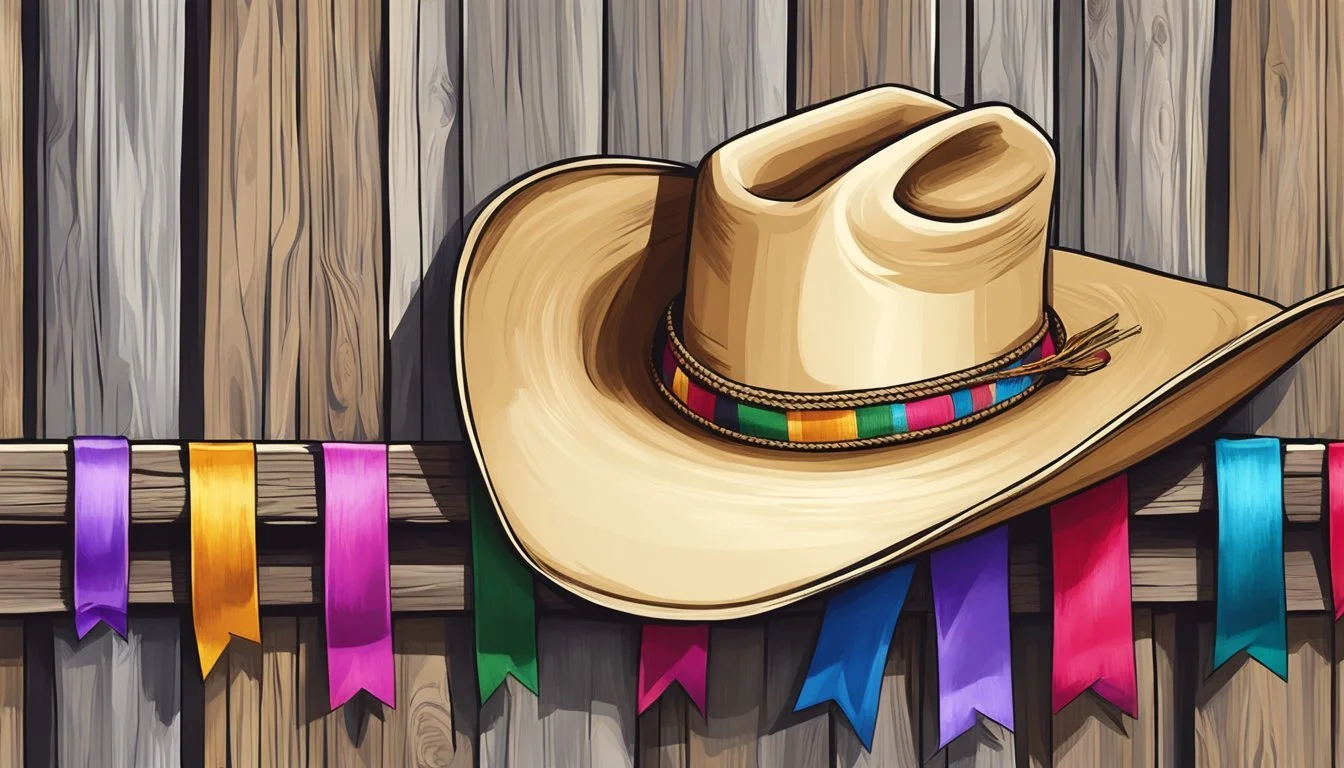The Influence of Spanish Traditions on Texas Cowboy Culture
Historical Roots and Modern Impacts
The cultural landscape of Texas is a complex tapestry woven with varied threads, among which the influence of Spanish traditions on the state's iconic cowboy culture stands out prominently. The evolution of the American cowboy is inextricably linked to the early traditions of Spanish cattle herding in the region, a heritage that began to shape Texas's identity as early as the 16th century. The vaqueros, or Spanish cowboys, were the progenitors of cattle ranching in Texas, demonstrating exceptional skills in livestock handling and horsemanship that were fundamental to the rise of the cowboy ethos.
As the Spanish established missions and brought their ranching practices to what is now Texas, they laid the foundational customs and techniques that would be adopted and adapted by the nascent cowboy culture. The Spanish introduced horses, cattle, and a distinct style of leather work, which included saddles and other gear, integral to the day-to-day operations of ranching. These elements became part of the bedrock of Texas cowboy culture, from the lasso to the rodeo, echoing across the vast plains and enduring through centuries.
The legacy of Spanish influence also permeates beyond the physical aspects of ranching into the intangible fabric of Texas identity; language, food, and music all carry echoes of this heritage. As American cowboys emerged, they retained and refined the horsemanship, cattle herding techniques, and ranch management styles that had their roots in Spanish tradition. Thus, the cowboy of Texas today is a figure that embodies not only the rugged individualism of the American West but also a rich cultural confluence that traces back to early Spanish settlers and their enduring legacies.
Historical Roots of Texan Cowboy Culture
The Texan cowboy culture has a rich history shaped by Spanish colonization and the subsequent blend of indigenous and Mexican influences. The vaquero tradition stands at the core, reflecting an evolution of practices and interactions that would define the cowboy identity of Texas.
Spanish Colonization and the Vaquero Legacy
Spanish expeditions in the 16th century heralded the beginning of colonization in the region known as Tejas. Spanish influence introduced the vaquero, skilled in horsemanship and cattle herding. Vaqueros were the blueprint for the American cowboy; their knowledge and techniques in ranching laid the groundwork for cattle culture in Texas.
Interactions with Native Americans and Mexicans
The shaping of cowboy traditions in Texas was not an isolated process. Native Americans and Mexicans interacted with Anglo settlers, each group exchanging methods and incorporating elements of the others' cowboy customs. These interactions were pivotal, allowing a synthesis of practices that propelled the evolution of cowboy culture.
Influence of the Mexican War of Independence
The Mexican War of Independence (1810-1821) had profound effects on Texas's political landscape, with ripples affecting cowboy culture. During this period, many Mexicans, including vaqueros, chose to settle in Texas, merging their ranching practices with local customs. This cross-pollination enriched local traditions, embedding Mexican elements firmly within Texan culture.
Post-Civil War Era Developments
Post-Civil War, the cowboy way of life in Texas expanded rapidly as demand for cattle grew. This era saw a redefining of the traditional vaquero as large-scale drives to railheads became necessary. The cowboy image was romanticized, but the skills and practices remained true to the heritage laid down by earlier Spanish and Mexican ranchers.
Through this historical tapestry, Texas cowboy culture stands as a testament to the enduring legacy of Spanish colonization and its interwoven Native American and Mexican influences.
Ranching and Livestock Management
The Spanish influence on Texas ranching extends beyond simple tradition, embedding itself in the practical aspects of livestock management and the evolution of ranching practices.
Origins and Spread of Cattle Ranching
Spanish settlers introduced cattle ranching to Texas in the early 18th century, bringing with them the practices that would become fundamental to the region's economy. Gregorio de Villalobos was instrumental in this transfer, being one of the first to transport cattle to the Americas. The ranches, or "ranchos," they established were not only centers of livestock production but also the birthplaces of cattle-herding culture in North America. The techniques of Spanish and later Mexican vaqueros became deeply ingrained in Texas ranching culture, influencing the dress, equipment, and cattle-herding methods that define the Texas cowboy today.
Cattle Breeds: Primarily Iberian breeds such as Texas Longhorns, derived from Andalusian cattle.
Herding Techniques: Horse-mounted herding and roping methods.
Original Ranches: Large land grants used initially for cattle ranching.
Sheep and Goat Herding Practices
Spaniards also brought sheep and goats to the area, and their herding practices were similarly adopted and adapted. The management of these smaller livestock species was often separate from cattle, yet the techniques for herding and raising them had a clear Spanish lineage. Shepherding developed into a staple of ranching culture alongside cattle ranching, diversifying the agricultural economy.
Livestock Types: Merino sheep and Angora goats.
Herding Practices: Free range herding and selective breeding.
The Impact of Mission Ranches on Ranching Culture
The Franciscan missions played a pivotal role in spreading ranching practices by introducing livestock raising as part of their economic activities. They served not just as religious centers but also as hubs for agricultural and ranching knowledge, involving native populations and furthering the combination of Spanish and indigenous ways. This interaction and exchange strengthened the pillar of ranching within regional economies and cultures.
Franciscans: Spread of ranching knowledge through mission activities.
Native Populations: Integration into ranching work, fusing cultural practices.
Economic Role: Missions functioned as proto-ranches, bolstering regional economies through agriculture and livestock.
Cowboy Skills and Rodeo
The Cowboy Skills and Rodeo section delves into the Spanish influence on the Texan cowboy tradition, focusing specifically on horsemanship, lassoing prowess, and the celebration of these abilities through rodeo events.
Horsemanship and the Use of the Lasso
Texas cowboys are known for their exceptional horsemanship—a skill honed through years of managing cattle and traversing diverse terrains. The lasso, or lariat, a crucial tool in their repertoire, was perfected by cowboys for its utility in capturing livestock with precision. The technique of lassoing not only demands dexterity but also a deep understanding of animal behavior and movement.
Rodeos as a Showcase of Skills
Rodeos offer a stage for cowboys to demonstrate their skills in front of an audience. Competitions involving calf roping, barrel racing, and bronc riding test a cowboy's agility, timing, and endurance. These events are not merely athletic contests; they're celebrations of a storied tradition and practical skills that have been essential to ranch operations.
The Role of Mexican Vaqueros in Developing Rodeo Events
The lineage of Texan rodeos can be traced to Mexican vaqueros, the original cowboys, who introduced rodeo events as a way to display their day-to-day ranching skills. The vaqueros' adept use of the lasso in rodeos was integral to the development of the event, highlighting a blend of expertise that crossed over into what is today recognized as a defining aspect of cowboy culture.
Cultural Exchange and Integration
The transformation of Texas cowboy culture was largely due to the amalgamation of Spanish traditions and local Texan elements, giving rise to new practices, dress codes, and a linguistic blend that remains an integral part of the cowboy identity.
Fusion of Spanish and Texan Cultural Elements
The convergence of Spanish and Texan cultural entities culminated in a unique heritage symbolized by the American cowboy. Spanish traditions, interwoven with the nuances of Texan culture, fostered a lifestyle that became synonymous with the American West. Hispanic culture infused local practices with time-honored customs, influencing everything from cattle herding techniques to communal festivities.
Adoption and Transformation of Vaquero Gear and Apparel
Chaps, derived from the Spanish "chaparreras", were adopted and adapted by Texan cowboys to protect their legs from the brush-filled landscape. The sombrero, evolving into what is now the iconic cowboy hat, demonstrates another instance of cultural symbiosis. Cowboy gear and dress did not merely copy Spanish equipment; it was transformed to meet the rugged demands of the Texas terrain.
Spanish Influence Transformation into Cowboy Culture Vaquero leather leggings (chaps) Adapted into various chap styles Wide-brimmed sombrero Refined into the Stetson cowboy hat Horse-riding equipment and saddles Modified to fit local needs
Linguistic Contributions and Spanish Words in Cowboy Vernacular
Spanish words seamlessly entered the cowboy vernacular, further cementing the Spanish legacy within cowboy culture. Terms like "rodeo" and "lariat" stem from Spanish, illustrating how the language has been embedded into the day-to-day life of the American cowboy. This linguistic crossover is a testament to the lasting impact of Hispanic culture on the Texas identity.
Rodeo: from "rodear" meaning to round up.
Lariat: from "la reata" meaning lasso or rope.
Corral: a pen for livestock, directly taken from Spanish.
Through dress, equipment, and language, the influence of Spanish traditions on Texas cowboy culture is profound, creating a distinctive identity deeply rooted in a rich history of cultural exchange and integration.
Economic and Social Influence
Spanning centuries, the Spanish traditions have imparted substantial economic and social impacts on Texas cowboy culture, influencing everything from the structure of cattle drives to the establishment of trade networks and the employment of vaquero labor on ranches.
Cattle Drives and Their Economic Significance
Cattle drives, originating from Spanish rancho practices, transformed into a major economic activity for Texans. They facilitated the movement of massive herds of cattle from Texas to railheads in Kansas, directly impacting the beef market and broader United States economy. Notably, Richard King, founder of the King Ranch, was a pioneer in driving cattle across the Rio Grande, turning cattle drives into a lucrative industry for stock raisers and helping to solidify beef as a cornerstone of the American diet.
Markets and Trade in the American West
The cattle trade evolved into a significant industry due to Spanish-influenced ranching methods. Texas became an integral part of a burgeoning market, supplying beef to other parts of the United States. The growth of the cattle industry supported the development of related markets and trade in the American West, including leather and livestock supplies, and became central to the economy of the region.
Labor and the Role of Vaqueros on Ranches
The vaqueros, skilled cattle workers of Spanish heritage, were integral to the ranches in Texas. They brought with them intricate knowledge of animal husbandry, including breeding and raising kineños (cattle). Under the employment of figures such as Villalobos and King, vaqueros shaped the labor landscape within the cattle industry. Their expertise was not only pivotal to operational efficacy on ranches but also to the broader socio-cultural fabric of the Texan and American ranching identity.
Social Impact and Identity
The Spanish legacy in Texas has deeply shaped the cowboy image and its cultural resonance. This section examines the cowboys' role in defining Texan identity, their contribution to regional traditions, and the nuances of discrimination and inclusion within this iconic culture.
Cowboy Influences on Texan Identity and Spirit
The identity and spirit of Texas are synonymous with the image of the cowboy, a figure that has its roots in the Spanish vaquero tradition. This persona is celebrated throughout Texas in places like San Antonio where the blend of American cowboy and Mexican vaquero heritage is pronounced. The spirit of independence, resilience, and the association with the vast, rugged landscapes of the Southwest embody the Texan ethos.
Role of Cowboys in Shaping Regional Traditions
Cowboys have played a pivotal role in cultivating South Texas traditions. Festivals such as rodeos, which showcase the skills inherited from Spanish horsemanship, are integral to Texan culture. These events not only honor the historical contributions of cowboys but also cement the cowboy iconography in the fabric of regional identity.
Discrimination and Inclusion within the Cowboy Culture
While the cowboy is a celebrated symbol, it's important to acknowledge the historical discrimination in this culture. The romanticized American cowboy often overshadowed the contributions of Mexican vaqueros, even though they were the forerunners in the field. Meanwhile, efforts have been made to more inclusively recognize the diverse roles played by various racial groups in the evolution of the cowboy legacy. Recognition of the full spectrum of cowboy heritage continues to grow within contemporary Texan society.
Preservation and Legacy
In Texas, the enduring influence of Spanish traditions on cowboy culture is evident. The commitment to celebrating and preserving this unique heritage is reflected through institutions, events, and landmarks that tell the story of the past while inspiring the present.
Museums and Education on Cowboy Heritage
Museums across Texas serve as strongholds of cultural preservation, playing a critical role in educating about the Spanish influence on cowboy traditions. For example, The Grace Museum in Abilene provides historical insights through art and artifacts, depicting scenes of early Spanish-influenced cowboy life. Meanwhile, educational programs and interactive exhibits at institutions like the Briscoe Western Art Museum in San Antonio ensure that the legacy continues to engage and inform new generations about the roots of their cowboy heritage.
Notable Institutions:
The Grace Museum
Briscoe Western Art Museum
National Cowboy & Western Heritage Museum
Annual Celebrations and Festivals
Annual events serve as a living testament to cowboy culture, with Spanish influences palpable in the traditions kept alive. Festivals like El Paso's vibrant Celebration of Our Mountains, and the ever-popular San Antonio Stock Show & Rodeo, combine the spectacle of rodeo sports with traditional Spanish music, dance, and food. These festivals not only celebrate cowboy heritage but also reinforce a community's identity rooted in Spanish and cowboy historical intertwinement.
Festivals Featuring Cowboy and Spanish Traditions:
San Antonio Stock Show & Rodeo: February
Celebration of Our Mountains, El Paso: Autumn
The Alamo and Other Historic Sites
Historic sites such as The Alamo in San Antonio are emblematic of the struggles and triumphs that shaped Cowboy culture and the Spanish influence within Texas. The Alamo, originally established as a Spanish mission, has become a symbol of Texan identity and determination. It, along with other mission sites within the San Antonio Missions National Historical Park, mark where Spanish religious and cultural practices merged with the local customs to form a unique Texan culture that is celebrated and preserved as part of the state's rich heritage.
Key Historical Landmarks:
The Alamo, San Antonio
San Antonio Missions National Historical Park
Conclusion
In Texas, cowboy culture is a vibrant and enduring part of the state's identity. It is a mosaic where Spanish traditions have lent color and contour to the rugged image of the American cowboy. One can trace the influence in the horsemanship and ranching techniques passed down from the Spanish vaqueros.
Resilience is a noted trait within cowboy culture, exemplifying the spirit of survival and adaptation in the American West. The adaptation of Spanish equestrian skills is a testament to this resilience, fostering a unique cowboy ethos in Texas.
At celebrations such as Cinco de Mayo or Fiesta San Antonio, the blending of cultures is palpable, reflecting the seamless integration of Spanish heritage into Texan life. These traditions are both preserved and evolved, showcasing the dynamic and inclusive nature of Texas's social fabric.
Influence on Cuisine: Tex-Mex, a beloved culinary tradition, owes its richness to Spanish and Mexican flavors—uniting them with local taste to create an iconic and cherished cuisine.
Rodeos and Festivals: Events favored in the Lone Star State often feature competitions and displays reminiscent of Spanish festival traditions adapted to local preferences.
In all, the blending of Spanish influence with local customs has contributed to the distinct character of Texas—a testament to historical influences and the transformational power of cultural exchange.





